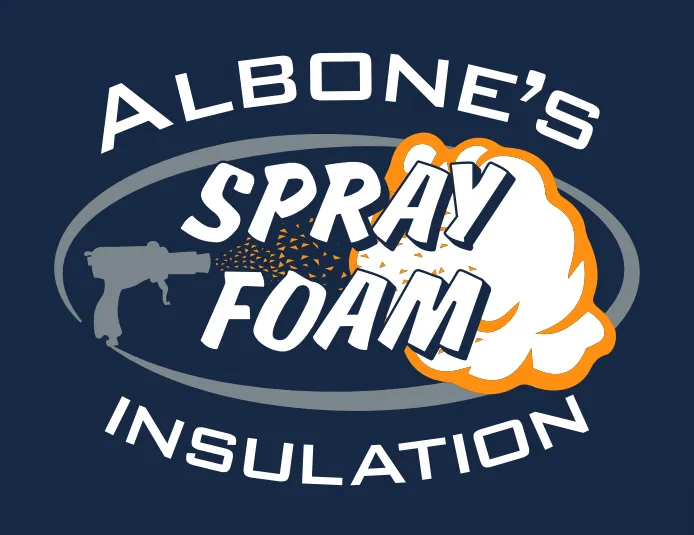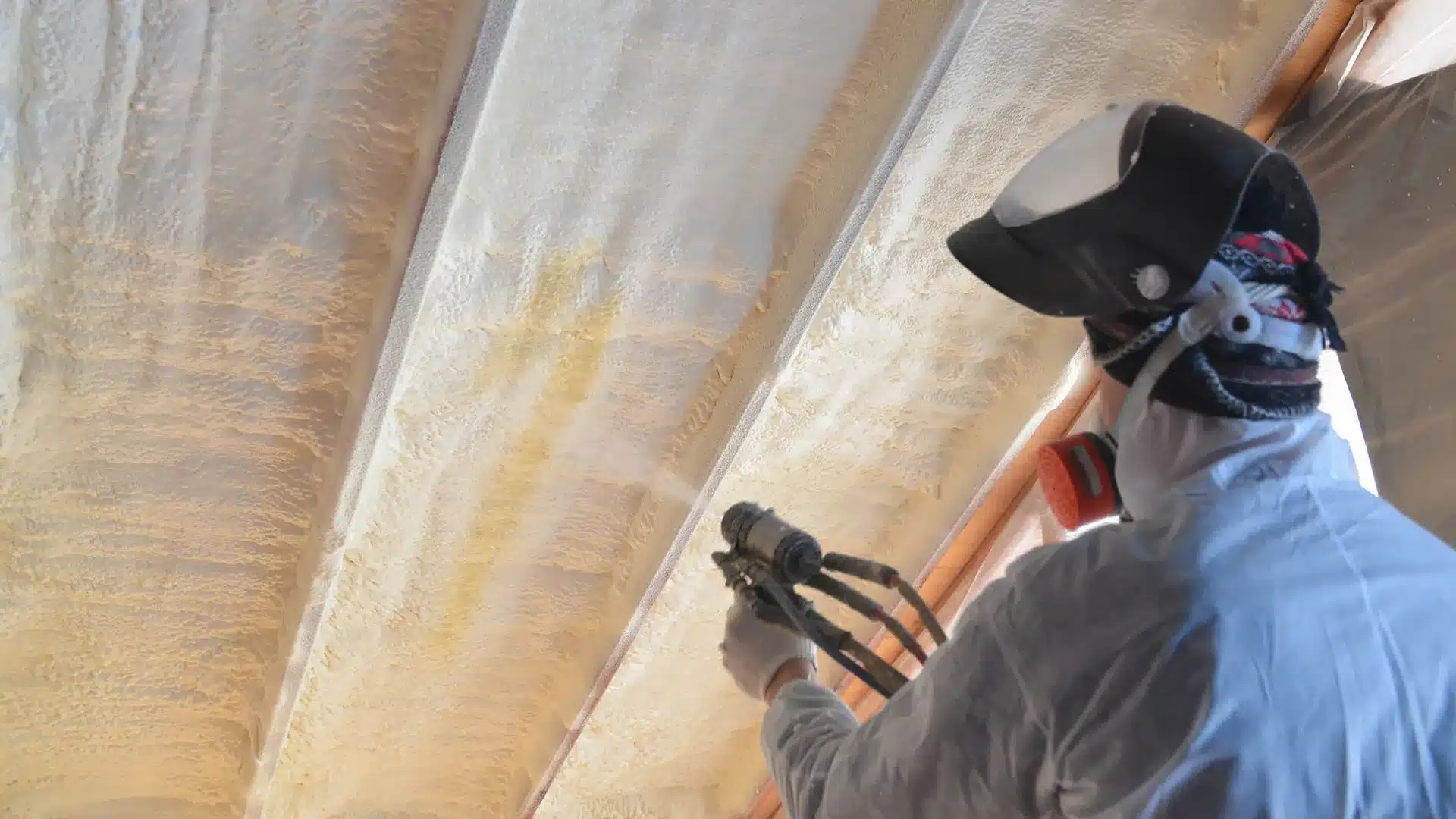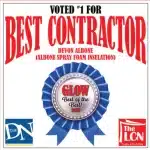When considering insulation solutions for homes or commercial properties in Rochester, NY, spray foam insulation is often at the top of the list. It’s known for its energy efficiency, long-term durability, and ability to significantly lower utility costs. But many property owners still wonder: is spray foam insulation safe for my property and my family? In this post, we’ll discuss the important facts about spray foam insulation and help you make an informed decision.
Understanding Spray Foam Insulation
Spray foam insulation is a popular insulation material that can be applied to walls, floors, and ceilings. It’s formed by mixing two chemical compounds—isocyanate and polyol resin—which expand upon application to form a dense insulating layer. Spray foam comes in two types: open-cell and closed-cell, each with its own benefits for different applications.
- Open-cell spray foam: Known for its softer texture and excellent sound-dampening qualities. It’s ideal for interior spaces where noise reduction is desired.
- Closed-cell spray foam: Denser and more rigid, providing higher insulation values and excellent moisture barriers. This makes it perfect for exterior walls and roofs.
Health and Safety of Spray Foam Insulation
Is Spray Foam Insulation Safe for Indoor Use?
Yes, spray foam insulation is safe for indoor use when properly installed by trained professionals. One key point to remember is that the safety of spray foam insulation largely depends on the installation process. Here’s why:
- Proper Application: During installation, the chemicals involved undergo a reaction that causes the foam to expand and harden. During this curing process, the chemicals can emit fumes that may be harmful if inhaled in large amounts. However, when properly installed by certified professionals, these chemicals are safe, and the fumes dissipate quickly. Installers will ensure proper ventilation during this process, and occupants are advised to stay out of the home for a specific time—usually 24 to 48 hours—until the foam has fully cured.
- Fully Cured Foam: Once spray foam is cured, it becomes inert, meaning it will no longer emit harmful chemicals. At this stage, it is considered completely safe for occupants, pets, and even those with sensitivities to chemicals.
Potential Health Concerns
The primary concern with spray foam insulation arises if it is not installed correctly or if the curing period is not respected. Incorrect mixing or poor application can lead to off-gassing, which can cause respiratory issues or irritation. This is why it’s important to work with an experienced, qualified installer like Albone’s Spray Foam, who follow all safety protocols.
- VOC Emissions: Spray foam, during its application, releases Volatile Organic Compounds (VOCs). These compounds are the reason why safety precautions during installation are vital. After curing, the VOCs are no longer present, making the indoor environment safe.
- Occupational Safety: For installers, personal protective equipment (PPE) such as respirators, gloves, and goggles are crucial to prevent chemical exposure. As a homeowner, working with a professional insulation contractor ensures that all these safety measures are in place.
Environmental Impact
Is Spray Foam Insulation Eco-Friendly?
Spray foam insulation has a mixed reputation regarding its environmental impact. On one hand, it helps save significant amounts of energy, reducing your overall carbon footprint by enhancing your property’s energy efficiency. On the other hand, the production and use of certain chemicals may raise concerns for environmentally conscious consumers.
- Energy Savings: Spray foam insulation can greatly reduce heating and cooling demands, especially in a climate like Rochester’s, where winters are long and harsh. By reducing energy consumption, spray foam contributes to fewer carbon emissions over the long term.
- HFCs in Spray Foam: Some older formulations of spray foam use blowing agents called Hydrofluorocarbons (HFCs), which have a high global warming potential. However, most modern spray foams have shifted to environmentally friendlier alternatives with lower global warming impacts.
Longevity and Reduced Waste
One environmental benefit of spray foam insulation is its longevity. Unlike other types of insulation, which may need replacing every 10-15 years, spray foam can last the lifetime of your building. This reduces waste and the need for frequent replacements, ultimately resulting in a greener solution for many property owners.
Comparing Spray Foam to Other Insulation Types
When comparing spray foam to fiberglass batt or blown-in insulation, safety and efficiency are significant factors. While fiberglass insulation is non-toxic, it can still pose issues like skin irritation during installation. Blown-in insulation, on the other hand, may settle over time, leading to reduced effectiveness. Spray foam insulation avoids these issues by forming a solid, airtight barrier that does not degrade, settle, or pose skin irritation risks once cured.
- Fiberglass vs. Spray Foam: Fiberglass is often seen as a cost-effective option, but it lacks the air-sealing properties of spray foam. Spray foam’s air barrier abilities help improve indoor air quality by keeping out allergens and pollutants, something that fiberglass cannot do as effectively.
- Blown-In Insulation vs. Spray Foam: Blown-in fiberglass is easier to install in some retrofit projects but lacks the moisture control that closed-cell spray foam provides. In a city like Rochester, where the climate can be quite humid, preventing moisture build-up is crucial to avoid mold and mildew.
Important Considerations for Rochester Property Owners
Adapting to Rochester’s Climate
Rochester’s cold winters and humid summers present unique insulation challenges. Spray foam insulation’s ability to both seal gaps and provide high R-value insulation makes it ideal for Rochester homes. The R-value, a measure of thermal resistance, is significantly higher in closed-cell spray foam compared to traditional insulation methods. This means less heat loss in the winter and better cooling retention in the summer.
- Air Sealing: One of the key benefits of spray foam insulation in Rochester, NY is its ability to seal air leaks—an important consideration for Rochester homes where drafts can significantly increase heating costs.
- Moisture Resistance: The ability of closed-cell spray foam to resist moisture is especially beneficial for properties in Rochester, where rain and snow can introduce moisture into basements, attics, and crawlspaces.
Professional Installation is Key
For the safety and effectiveness of spray foam insulation, choosing a professional installer is paramount. Albone’s Spray Foam in Rochester employs trained experts who follow industry best practices, ensuring that your spray foam insulation is applied correctly and safely. Our team prioritizes customer safety and satisfaction—which means you can rest easy knowing your insulation job is done right.
Ready to Improve Your Property’s Comfort and Safety?
If you’re looking for an efficient, safe insulation option for your Rochester property, spray foam insulation is an excellent choice—provided it’s installed by experienced professionals. At Albone’s Spray Foam, we bring years of expertise to every project, ensuring that your insulation is applied safely and effectively. Our team is here to help you make your home or business more comfortable, energy-efficient, and resilient against Rochester’s challenging weather.
Give us a call at (585) 560-1369, visit our website at https://albonesprayfoam.com/, or email us at [email protected] to schedule a consultation or learn more about how spray foam insulation can benefit your property.
Frequently Asked Questions
1. How long does spray foam insulation take to cure?
Typically, spray foam insulation takes 24 to 48 hours to fully cure, depending on humidity and temperature.
2. Is spray foam insulation safe for people with allergies?
Yes, once fully cured, spray foam insulation is inert and can actually help reduce allergens by sealing air leaks.
3. Can I stay in my house while spray foam insulation is being installed?
No, it’s advised to leave the premises for at least 24 hours to allow proper curing and ventilation.
4. How long does spray foam insulation last?
Spray foam insulation can last the building for a lifetime without needing replacement.




